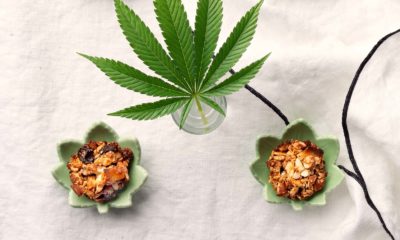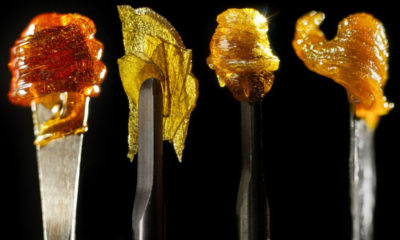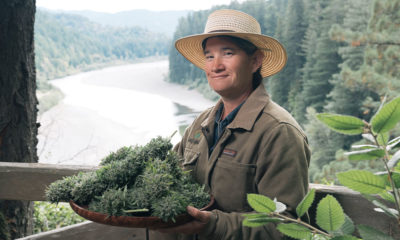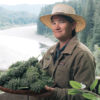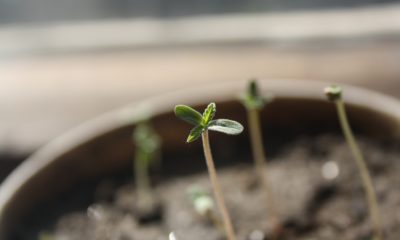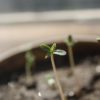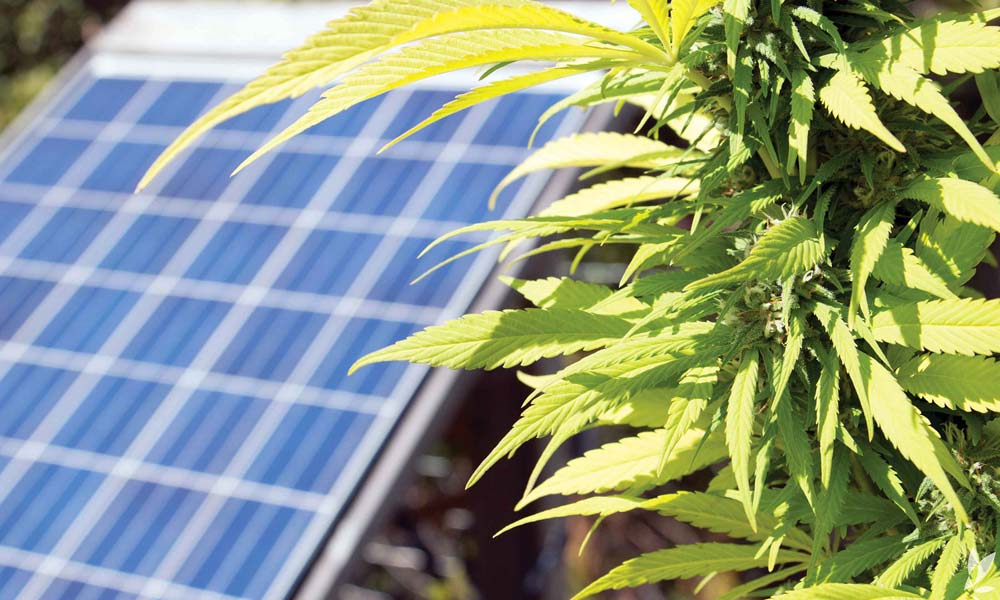
Photos Courtesy Flow Kana
Cultivation
The Environmental Impact of Cannabis Cultivation
When it comes to sustainable cultivation, it’s the method that matters.
As conscious consumerism enters the cannabis world, purchasing decisions may be based more on fair trade and regenerative farming than on orange hairs and THC percentage. With legalization taking hold, the industry has shifted from trying to protect people from the police to trying to protect small businesses from the behemoths that are inevitably entering the cannabis space. But while a lot of support for small cannabis businesses comes out of a concern for the people involved, there’s another party to be considered: the planet.
Large-scale industrial agriculture has historically been no friend to the environment. But where does the environmental impact of cannabis production really lie? It’s not necessarily size that determines how sustainable a cannabis grow is. A small, indoor operation wastes an incredible amount of electricity, while large-scale outdoor regenerative farming is possible with foresight and planning.
Of course, the cannabis industry right now isn’t set up to reward sustainable practices. California, one of the agricultural centers of the world, has so far allowed cannabis to be cultivated outdoors in only 13 counties, and as of now the products found on the shelves in dispensaries are more likely to come from indoor producers.
When considering the environmental impacts of cannabis cultivation, it’s more relevant to examine the different methods used for cultivation and to remember that, unlike traditional agriculture, cannabis cultivation has another complicated dimension — one created by the remnants of reefer madness.

Elysian Fields, an off-grid homestead in Mendocino County, is run by Jennifer Gray and Simon Evers.
An Energy-Efficient Means of Production
While greenhouse and indoor operations can take steps to reduce their carbon footprint like collecting and re-using water, soil and other natural resources, growing cannabis outside is the most energy efficient method of production.
The International Cannabis Farmers Association, a California-based organization formed to encourage policies supporting local farmers and sungrown cultivation, conducted a study of the various energy consumption levels for different types of production. Their data showed half an acre of indoor production (22,000 square feet) produces the same energy needs per year as 298 average households. Four season greenhouses account for 82 households’ worth of energy, while greenhouses that use the sun’s light for flowering emit the same as 15 houses. Hoop houses that take in mostly sunlight with some supplemental lighting are using the same as 0.5 houses annually, and of course, cannabis grown under the sun uses no additional lighting energy.
So, if the sungrown method is in line with the sustainability goal of decreased energy consumption, why is it allowed only in certain areas and why are the shelves dominated by indoor product? The answer to both questions stems from an artificial idea of “quality” that dominates the market, along with fears around cannabis being “too free.”
Under prohibition, pop culture and the media decided the characteristics that defined “quality” were primarily THC percentage and bud appearance. This would be like deciding the quality of a wine based on the alcohol percentage and color. This, along with the fears in the public overseeing cannabis growing out in the open, led to policies that support indoor cultivation in large, highly secure facilities.
However, growing cannabis on small farms in the sun — in harmony with the environment and without the use of chemicals — creates an objectively high-quality end product. This is because the full spectrum of the sun’s rays maximizes cannabinoid and terpenoid development and because healthy, nutrient-rich soil translates into cleaner cannabis.
Johnny Casali from Huckleberry Hill Farms in Humboldt County says growing with an extra attention to preserving the natural landscape has an impact on the plants that results in cannabis with a true terroir. Terroir, a French term often applied to wine, refers to the unique impact that environmental factors have on a plant phenotype.
“The ability to grow my cannabis in natural sunlight, on a property unique to any other, allows me to create strains that thrive in this area of Humboldt County,” Casali said. “The sun dictates my special creations by rising in the early mornings and setting just behind the madrone trees at 6 p.m.”

61 Alpenglow, a 80-acre farm in Southern Humboldt, grows cannabis outdoors alongside solar panels. The farm is in the “banana belt” of its region, meaning the property is warmer and more dry than the valley below it.
The Regulations for Growing Under the Sun
Sungrown production is currently allowed in California, Oregon, Washington, Colorado, New Mexico and Arizona. Growing outdoor herb provides for 1-2 crops per year, compared to the six harvests indoor operations can produce. However, under these states’ laws, cannabis cultivators are taxed based upon the final weight of the cannabis they’re selling, rather than based upon how many production cycles they have. For sungrown cannabis cultivators to compete in this marketplace, they’d need help from more production-based tax incentives.
However, there are a few methods that outdoor growers can incorporate to supplement the natural sunlight and squeeze more harvests in a year. Mixed light operations can range from hoop houses, where farmers pull tarps to create light deprivation, to four season greenhouses that use supplemental lighting to grow cannabis off-season. In addition to supplemental lighting, these facilities may require some seasonal ventilation, heating and cooling. And, like sungrown, this method is only allowed only in some states.
When considering the energy efficiency of different lighting systems, the two types of lights that should be considered are antiquated High-Pressure Sodium (HPS) lights and Light Emitting Diode (LED) lighting. While LEDs are more energy efficient, this method is also more expensive. This means that HPS lights are more common, though LEDs are steadily gaining popularity.
Of course, some cannabis farmers don’t use electric lights at all — for their plants or for themselves — because their farmers believe in a lifestyle free of dependence on artificial energy. One such farmer is Simon Evers of Elysian Fields, a second-generation farm in Mendocino County.
“I choose to live off the grid, in the country,” Evers said. “I believe in homesteading and community a lot. And in that dynamic, [cultivating] sungrown [cannabis] just makes sense.”
Beyond growing under the sun, another way to improve a cannabis farm’s footprint is to adopt regenerative farming practices, which improve the quality of the land even as it is used for cultivation. These regenerative practices include the use of living soils, companion plants, beneficial insects, closed loop compost systems and water recycling.
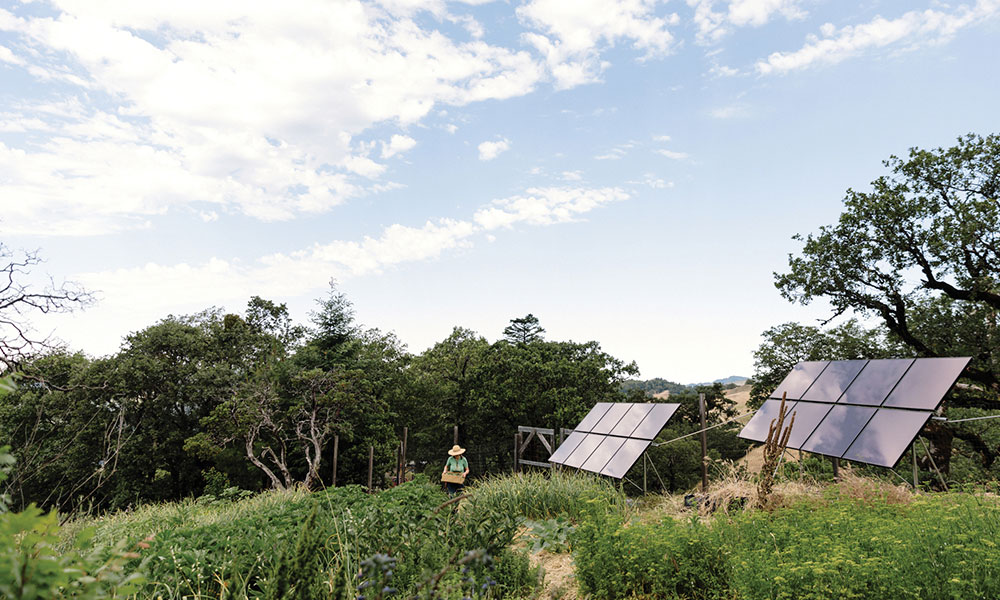
HappyDay Farms is a small, diversified family farm located in the hills of Northern Mendocino County, California. The farm also grows produce and flowers for a Community Supported Agriculture (CSA) program and local farmers’ markets.
Cyril Guthridge, who runs Waterdog Herb Farm in Mendocino County, believes other natural elements beyond the sun influence the expression of his outdoor harvest.
“It’s about the benefits of the sun, the moon and the air,” Guthridge said.
Guthridge said that his use of companion plants improves the terpene expression of his cannabis, as does the stress of the natural environment.
The trend of cannabis farmers growing other crops on their farm is actually an impact of prohibition, as small craft cannabis farmers needed to create systems that would minimize their trips to town to decrease the likelihood of detection. This, along with a culture of land stewardship, has created a swath of earth-friendly, agri-creative cannabis gardens that are perfect examples of 21st-century farming. As Guthridge says, he’s a cannabis farmer “using nature to make nature better.”
Despite the benefits these farmers see from cultivating with regenerative practices, artisan operators are in danger because of many new cannabis regulations. Because of unique policy and licensing hurdles, cannabis farmers are not eligible for tax incentives based on energy conservation, unlike traditional crop farmers. In addition, there are also more environmental hurdles for sungrown farmers to getting licensed in a legalized environment, including more complicated water access permits and inspection processes.
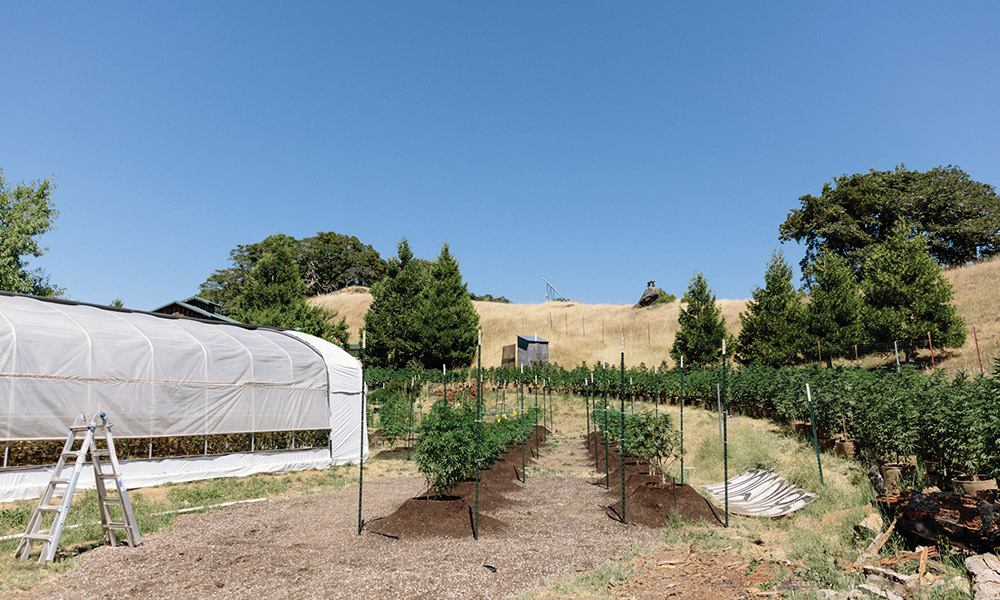
Sungrown cannabis plants at Elysian Fields.
Shifting Perceptions & Blaming Prohibition
In order for sustainable cannabis practices to be feasible in a regulated market, two shifts in perception must occur.
The first perception that needs to change is that “quality” cannabis is defined by THC percentage and bright orange hairs. Instead, the cannabis consuming public must adapt to a new definition that includes the method by which the plant was farmed, the ethics of the companies that will benefit from that purchase and how that product has impacted the land.
The second perception that must be abolished is the opinion held by many local governments that cannabis grown outdoors is somehow a bigger safety and crime risk than cannabis grown indoors. We must start licensing sungrown cannabis, and encouraging new regulations that provide incentives to grow outdoors, as a part of the larger push for responsible environmental policy.
Ultimately, the only party to blame here is prohibition. Prohibition took a crop and forced it indoors under artificial light — and reefer madness is keeping it there.
Originally published in the print edition of Cannabis Now.





